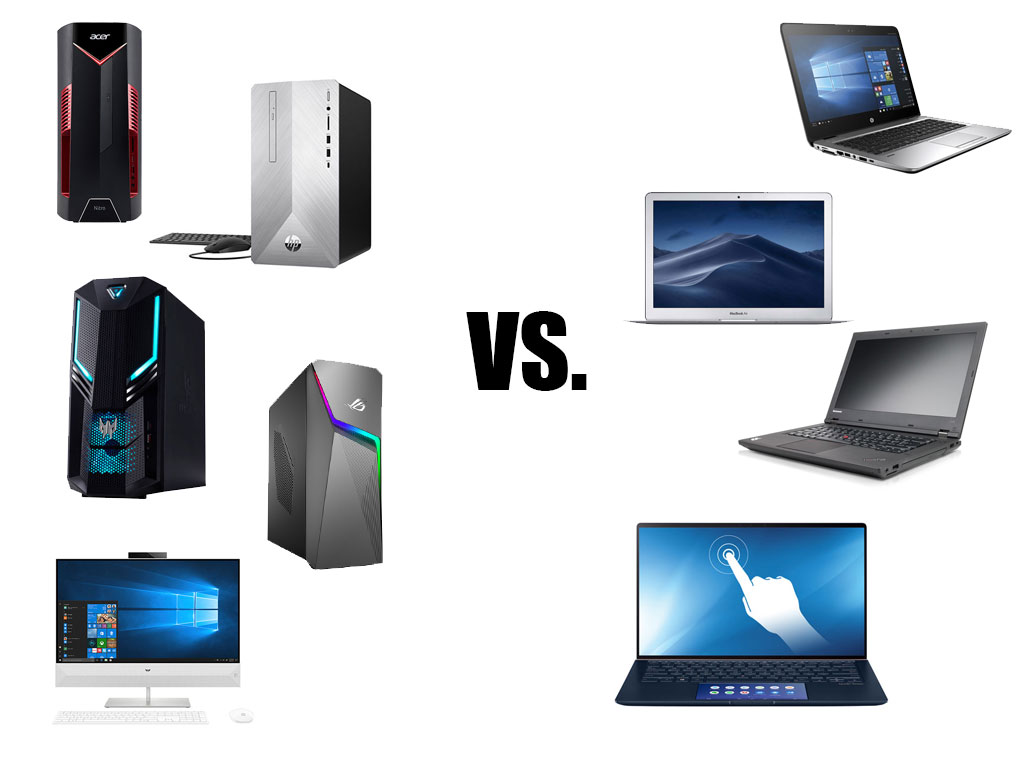 When you walk into your local Best Buy store to buy a new computer, you will immediately find yourself confronted with one of the great conundrums of our times—desktop or laptop? Today I’m going to help you navigate a deceptively straightforward choice with some wisdom gleaned from many years of using both.
When you walk into your local Best Buy store to buy a new computer, you will immediately find yourself confronted with one of the great conundrums of our times—desktop or laptop? Today I’m going to help you navigate a deceptively straightforward choice with some wisdom gleaned from many years of using both.
The most important variable the decision making is of course, your own needs. There are certain cases in which a desktop makes more sense, and others where a laptop is a better choice. For example, if you are a gamer, you will get a lot better value with a PC. But if portability is an issue and you need to move your computer around then a laptop is the way to go. So many people work remotely nowadays, and most prefer to have a laptop so that they’re not tied to one location.
In my opinion the number one trade-off is portability versus value for money. For the same money, a desktop will outperform a laptop every time; but if you need to be able to move your computer around, it’s got to be a laptop.
Let’s take a look at some of the other differences between a laptop and a PC.

Set up
In terms of set up, a laptop is super straightforward; you just hit the power button and you’re off to the races—provided the battery is charged of course! A PC has a few more steps, like connecting the keyboard, monitor, mouse and power supply. It’s by no means difficult, but it’s definitely more work than a laptop. In terms of power requirements, a desktop must always be plugged in while operating, and in the case of a blackout it will shut down instantly, whereas a laptop will continue working as as long as the battery has power.
Upgrades
If you need to improve your computer’s performance, it’s pretty easy to upgrade a desktop PC. They’re designed in such a way that it’s straightforward to swap out components should you want or need to. And if you decide that your display isn’t up to scratch, either in terms of size, resolution or refresh rate, you can just go out and buy a new monitor.
With a laptop on the other hand, you can certainly connect it to an external monitor when you are home, but for many other components (e.g., video card, memory) you’re either stuck with what you purchased, or limited in its upgradability. You can also mirror your laptop screen to your TV using a media streamer like the Roku Streaming Stick. Apple AirPlay also works if you have a MacBook and an Apple TV. As regards upgrading the memory or graphics card for example, that’s far from a trivial matter. Because laptops are designed to be as compact as possible, it’s difficult for the average user to change all but a few parts.
An Apple iMac
Ergonomics
One final consideration is ergonomics. I find stand-alone keyboards and mice (mouses?) easier to use than the trackpad and built-in keyboard of a laptop; although you may have your own preference. Make sure to try before you buy though. Also, it’s worth noting that using a desktop allows you to set the monitor height in such a way as to reduce the strain on your neck, which can be problematic if you spend a lot of time looking down at a laptop screen.
Be sure to check out all the desktop computers and laptops available at Best Buy, where you are sure to find one with your name on it!




I would love to see an iPad Pro under the Christmas tree with my name on it!
Please disregard this comment as I put it in the wrong place!
desktop
Comments are closed.